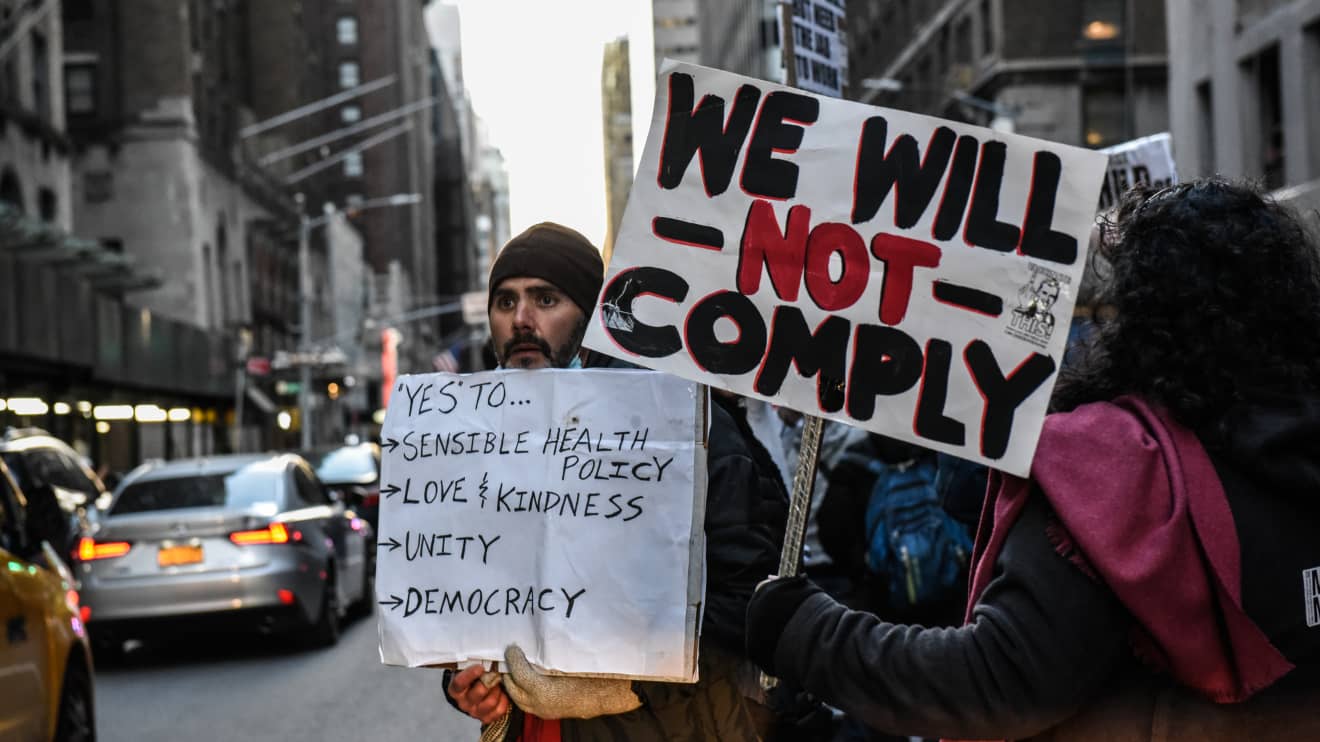Dec. 27, 2021
By Charles Passy
A Reddit thread with nearly 25K comments looks at how COVID-19 changed lives in unexpected ways, from vaccine resistance to toilet-paper shortages

Protesters rally against vaccine mandates on November 20, 2021 in New York City. STEPHANIE KEITH/GETTY IMAGES
A Reddit thread with nearly 25K comments looks at how COVID-19 changed lives in unexpected ways, from vaccine resistance to toilet-paper shortages

Protesters rally against vaccine mandates on November 20, 2021 in New York City. STEPHANIE KEITH/GETTY IMAGES
As the coronavirus pandemic heads into its third year, with signs aplenty that things are worsening with the omicron variant, people are taking stock of how the health crisis has changed and affected them in myriad ways. And some are expressing surprises of all kinds.
A popular Reddit thread posted earlier in December looks at that very question: “What’s surprised you the most about the pandemic?” It has racked up nearly 25,000 comments to date.
Perhaps the most common theme was how the pandemic divided the U.S., if not the globe, and became such a hot-button political issue, which was a development that many apparently didn’t expect. One Redditor lamented: “Not sure if there’s anything that can unite us again.” Another referred to a speech from Heath Ledger’s Joker character in “The Dark Knight” movie, noting that his observations “about how civilized people will eat each other when the chips are down wasn’t that far off after all.”
Some naturally expressed surprise — and disappointment — that the COVID-19 vaccines developed by pharmaceutical companies like Pfizer PFE, -1.98%, Moderna MRNA, -2.36% and Johnson & Johnson JNJ, 0.37% weren’t universally accepted. “I thought that people would surely get vaccinated when threatened by actual illness. Nope,” one said. “There is a solution, it’s free, it’s right in front of them, and they refuse it,” another said.
On the other hand, some were taken off guard by all the government involvement — presumably they were referring to shutdowns, and mask and vaccine mandates — and decried what they called a lack of freedom. “It’s like collectively, people haven’t learned anything from history,” one said.
Related: Apple delays return-to-office date indefinitely, gives workers $1,000 ‘work-from-home’ bonus

Toilet-paper shortages have been another great — and unwanted — surprise of the pandemic. NAOMI BAKER/GETTY IMAGES
Some found a surprise silver lining in terms of the quiet and time for reflection that the pandemic afforded them. Even someone in the United Kingdom who was laid off from work at the start of the pandemic saw a positive: “The weather in the U.K. was absolutely stunning for those few months and I just remember going on walks and binge watching so many series on Netflix NFLX, -0.34% … I hated having to go back to work.”
And at least one Redditor was surprised at how the pandemic prompted them to make changes in their life for the better. In this case, the writer said that it became a time to successfully confront their alcohol addiction: “This huge event showed how much I was still willing to fight.”
Some who stayed in their jobs but worked from home were also surprised at their productivity and contentment with the new arrangements. One noted, “It was oddly peaceful…I could work from home without being bothered.” Others claimed the massive shift to so many people working from home proved that most offices are “unnecessary.”
Of course, the great pandemic toilet-paper shortages prompted surprise as well. But at least one Redditor said the surprise came with a solution — the purchase of a bidet. “How nice (it) is,” the commenter wrote. (And indeed, bidet sales have surged during the past couple of years.)
Alas, the most frustrating surprise for many is that the pandemic is far from over, particularly as the spread caused by the omicron variant prompts new closures and restrictions. One Redditor simply said, “It doesn’t seem to end.” Another said they looked back on the early days of the pandemic almost with nostalgia. “Everyone was just baking bread and staying home and it was kind of fun!” But the Redditor added that now “I’m just sad. And tired. So very tired.”

















